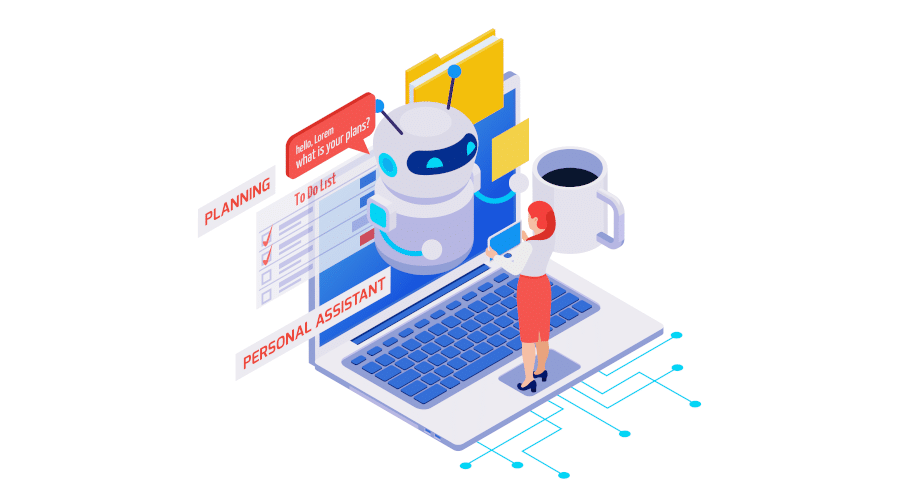Hugging Face is a company providing open source libraries containing pre-trained models. Specializing in machine learning, Hugging Face has developed its business with several innovative AI-based products. Today, the company aims to become the "GitHub of machine learning".
What is Hugging Face?
Hugging Face is a French startup founded in 2015 by Julien Chaumond and Clément Delangue. Their goal: to make artificial intelligence accessible to everyone.
To achieve this, Hugging Face offers an open-source NLP (Natural language Processing) library. In other words, they offer their customers an API facilitating access to pre-trained models.
As these machine learning models are already trained, their learning and experimentation are simplified. As a bonus, they also offer tools for managing existing data and models, and for developing and training new models.
Since its launch, the company has experienced exponential growth and is well on its way to becoming one of the benchmarks in the artificial intelligence sector. In 2020, it was named one of the world’s most innovative companies by MIT Technology Review.
What are Hugging Face's solutions?
Over the years, Hugging Face has developed a range of innovative AI-based products. Discover the main ones.

The Transformers library
To help its community manage and develop its Machine Learning models, Hugging Face offers several open source libraries. The best known is Transformers, a library designed to train and deploy Python-based NLP models. They can then perform a variety of natural language processing tasks, such as classification, text generation, named entity detection, information extraction, question answering…
To perform all these tasks, Tranformers uses inference training.
Training is the traditional method used in machine learning. By simply presenting labeled data, the model is gradually trained. As it trains, its performance increases.
Inference, on the other hand, enables much more advanced models to be designed, as they train on unlabeled information. Each model will learn by itself (always on the basis of references learned beforehand).
Other libraries
In addition to Transformers, Hugging Face also offers its Datasets library, providing access to over 100 NLP datasets. Or Tokenizers, which tokenizes over 40 languages.
Good to know: Hugging Face also offers NLP training. Users can then take advantage of all these available libraries.
Accelerate
It’s an API that lets developers and data scientists run their own scripts and code their own training loops. And all this in different types of configuration.
And to make learning NLP easier, Hugging Face also offers users a CLI tool for quickly configuring and testing training environments.
Spaces
As Hugging Face has developed a genuine community strategy, it also offers model hosting. More precisely, an exchange zone where community members share their Machine Learning applications.
They can then create their apps directly with Hugging Face. And thanks to version control, collaboration is simplified to design even more powerful and innovative ML models.
Les chatbots
Hugging Face first made a name for itself through its chatbot applications. It’s worth mentioning them, even if they’re no longer their core business. These were developed using the company’s natural language processing model (Hierarchical Multi-Task Learning – HMTL).
Available applications include Chatty>, Talking Dog, Talking Egg and Boloss.
Initially, these were mainly chatbots for teenagers. But gradually, Hugging Face developed into a reference in the field of Machine Learning.

What does the future hold for Hugging Face?
Hugging may have started out as a simple chatbot for teenagers, but today their ambition goes much further.
And with good reason: since their creation, they’ve been multiplying their fundraising efforts.
- As early as 2017, they raised $1.2 million in pre-seed ;
- In 2018, it’s 4 million in seed ;
- In 2019, Hugging Face raises $15 million in Series A funding;
- In 2021, they move to $40 million for a Series B, then $100 million for a Series C.
So what’s the point? To become the “GitHub of Machine Learning” and democratize artificial intelligence. And the mission has been a success, to say the least. On the one hand, the French startup is already used by the big names in tech, such as the teams at Google, Meta, Microsoft and Intel. This proves that it is already setting the standard.
On the other hand, Hugging Face and Amazon Web Service announced their partnership in February 2023. The aim is to “accelerate the availability of next-generation Machine Learning models, making them more accessible to the community and helping developers achieve better performance at lower cost”.
Expand your ML knowledge with DataScientest
While Hugging Face aims to democratize AI, the fact remains that machine learning requires specific skills. Hence the need for training. DataScientest makes it possible. Through our training courses in data science or natural language processing, you’ll develop all the practical and theoretical knowledge you need to design your own NLP models.










